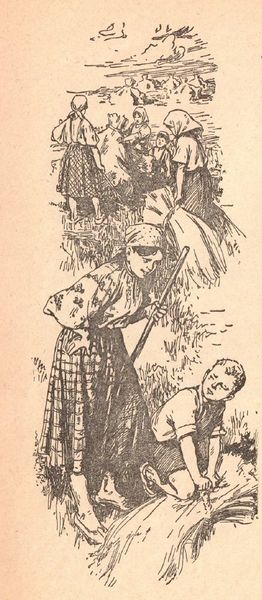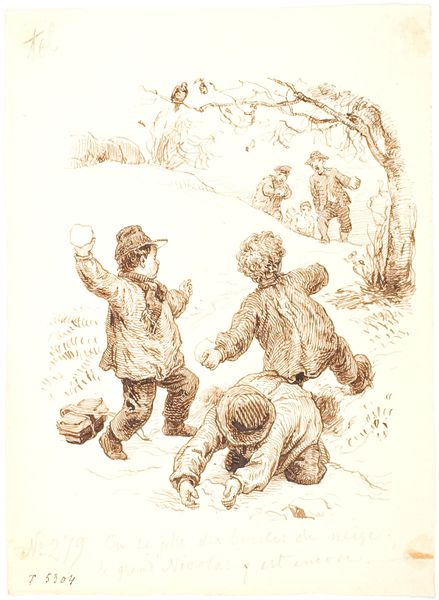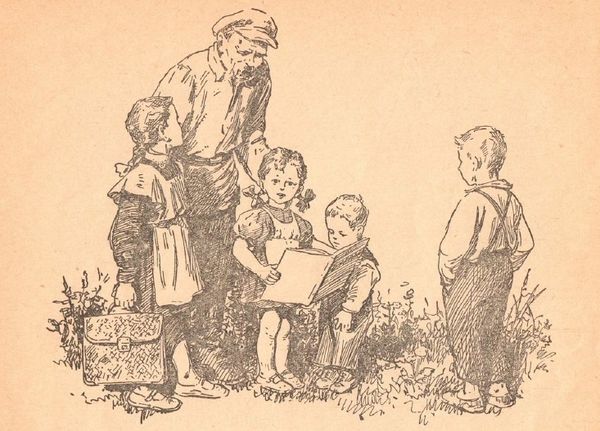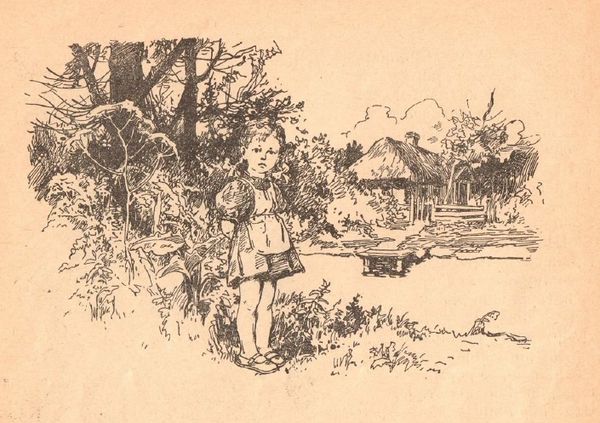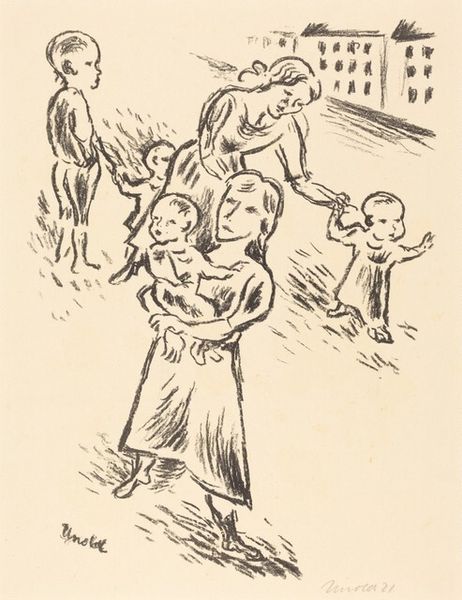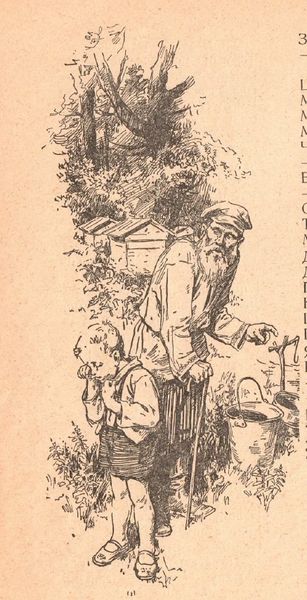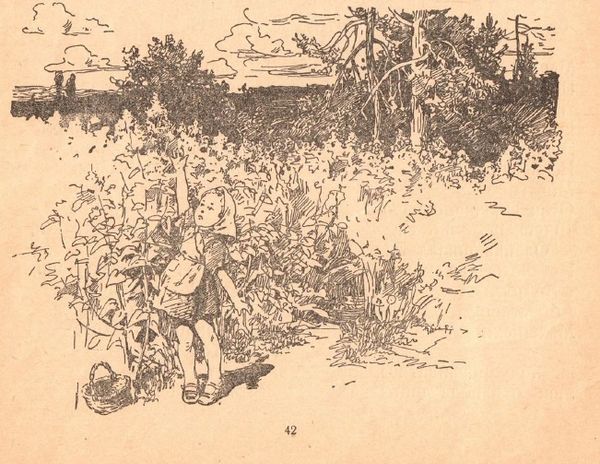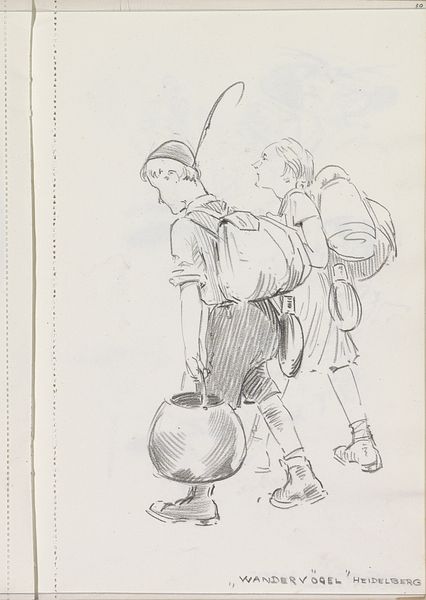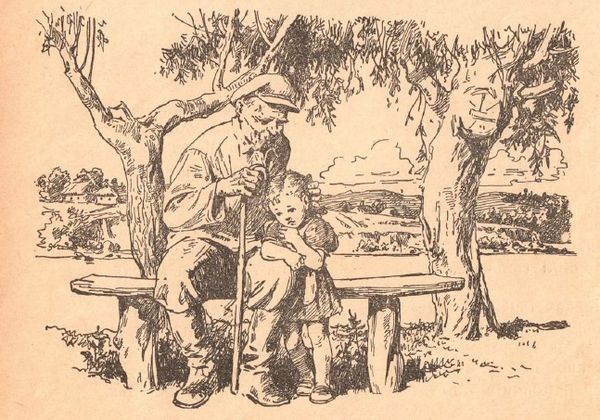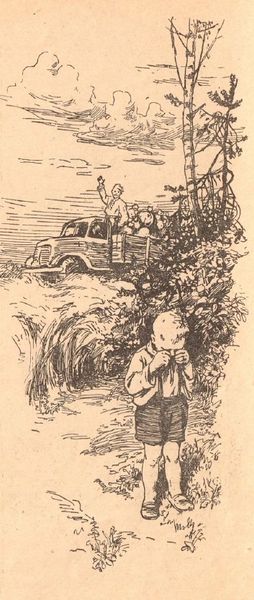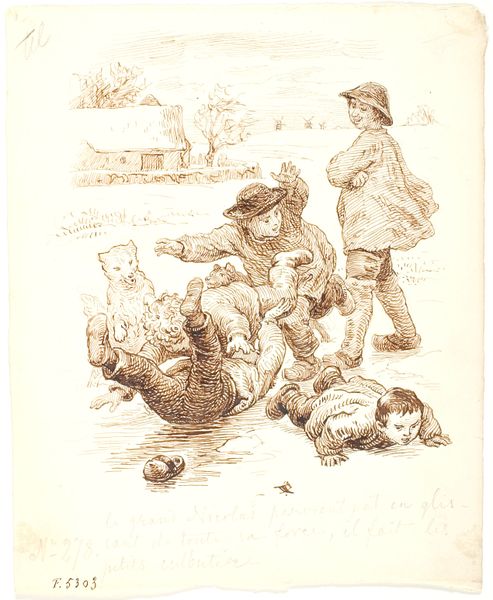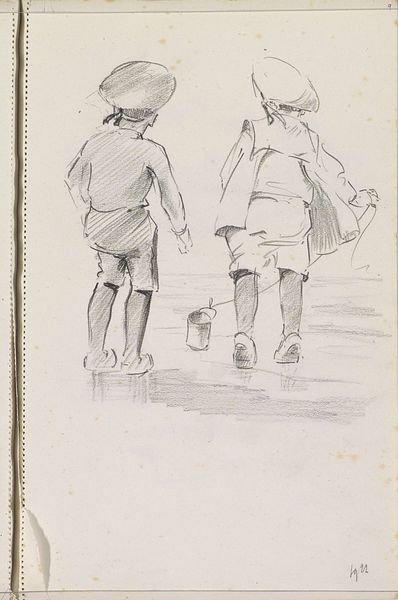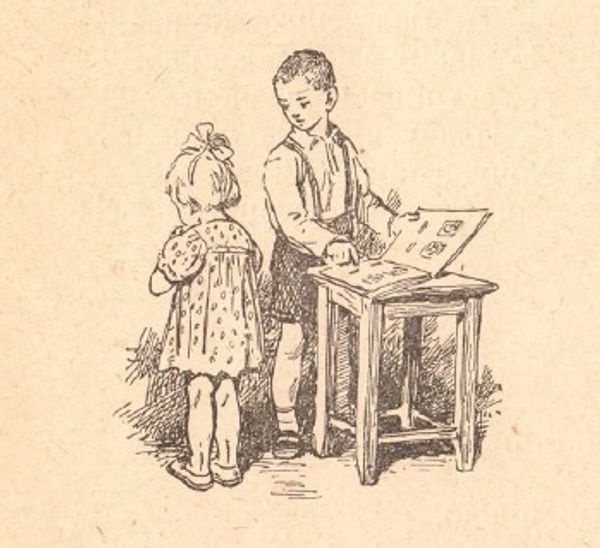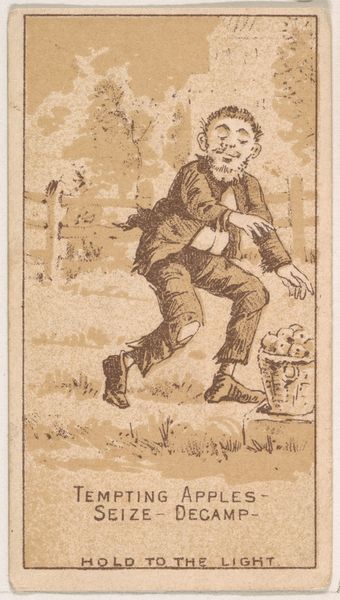
Illustrations for Mikhail Stelmakh's book "In the Hedgehog's Windmill" 1956
0:00
0:00
drawing, paper, ink
#
portrait
#
drawing
#
soviet-nonconformist-art
#
figuration
#
paper
#
ink
#
child
#
folk-art
#
costume
#
line
#
genre-painting
#
realism
Copyright: Hryhorii Havrylenko,Fair Use
Editor: Here we have Hryhorii Havrylenko’s Illustrations for Mikhail Stelmakh's book "In the Hedgehog's Windmill," created in 1956, using ink on paper. It shows children walking. The simplicity of the drawing gives it a sense of childlike innocence. What's your take on it? Curator: Considering its creation during the Soviet era, I look at the very materiality and production surrounding it. Paper, ink – these were often subject to state control. Who had access, and to what quality of materials? Even the act of drawing, of illustrating a children's book, was a form of labor within a system. The very *making* of art during this period can tell us a great deal about social structures. Editor: So you’re thinking about the conditions that allowed this work to come into existence, not just the image itself? Curator: Precisely! How did the artist navigate the limitations imposed? Ink wasn’t just ink; it was a product, distributed through certain channels, imbued with political weight. Think about the labor involved—did Havrylenko have access to a studio? Were they commissioned? These material conditions are as important as the aesthetic result. Editor: That's fascinating. It shifts my focus from simply viewing it to considering the entire system it existed within. I wonder if the line work itself reflects any of those constraints... was a quick line more efficient to get the art approved more easily? Curator: That is a question worth pursuing! How much time and resource was he willing, or allowed, to commit to the materials? Was "Realism" a state directive, which meant focusing on simple forms that aligned with Socialist messaging? How did these elements dictate not only the subject, but the form and material too? Editor: I never would have considered looking at this through the lens of state-controlled resources. It makes me think about what freedoms and restrictions were at play behind the scenes. Curator: Exactly. The "folk-art" and genre aspects are intertwined with the means of production, the materials available, and even the state's agenda to make folk art more visible.
Comments
No comments
Be the first to comment and join the conversation on the ultimate creative platform.
